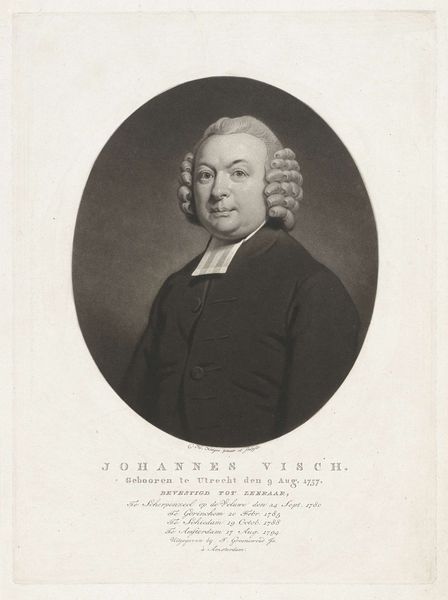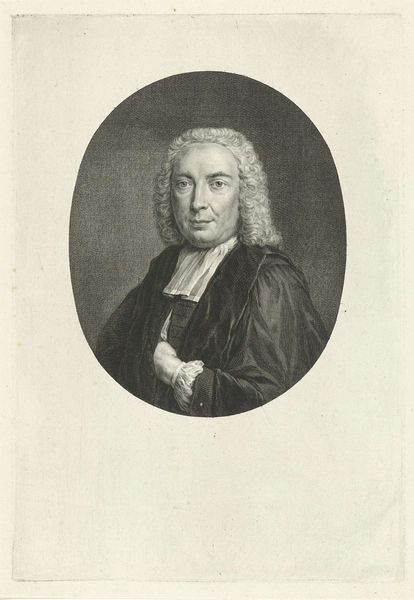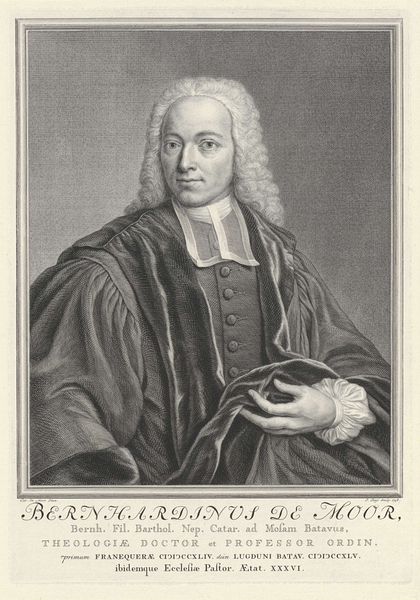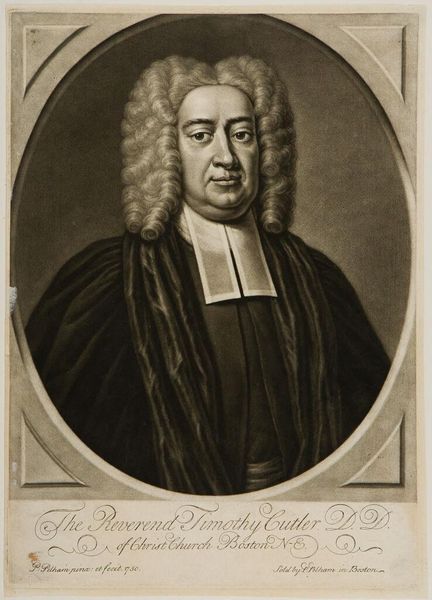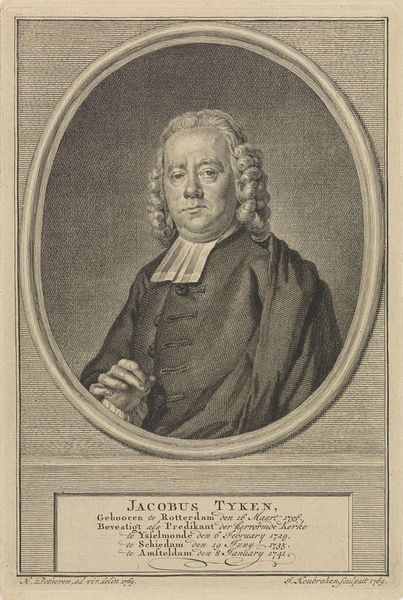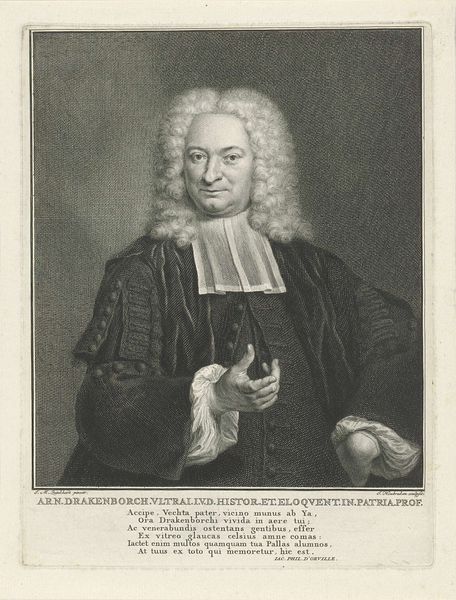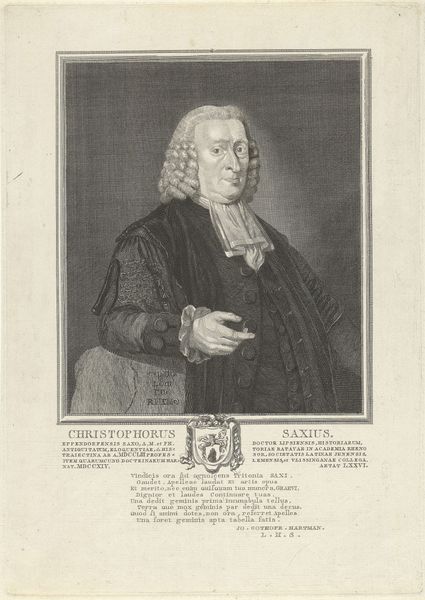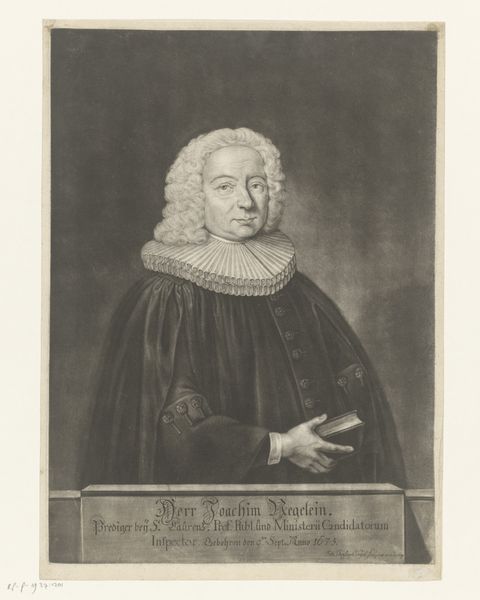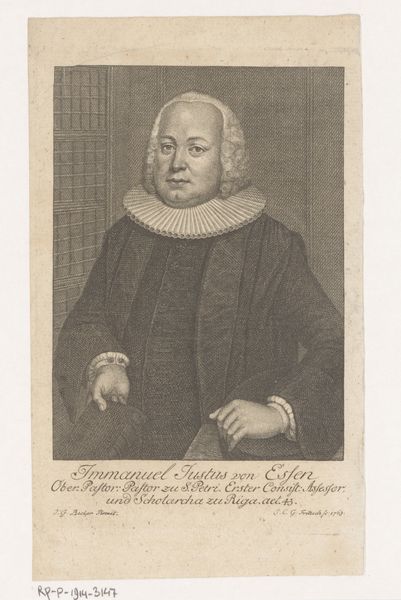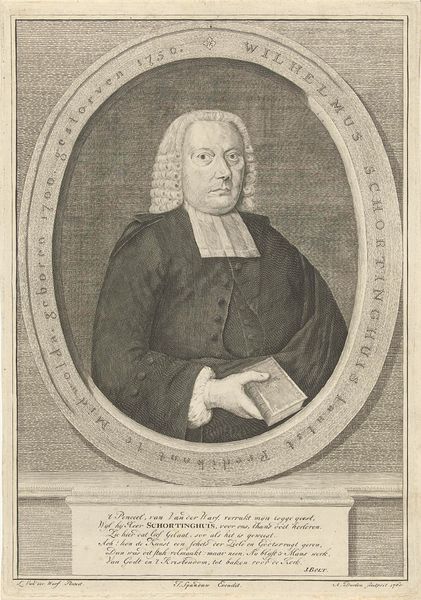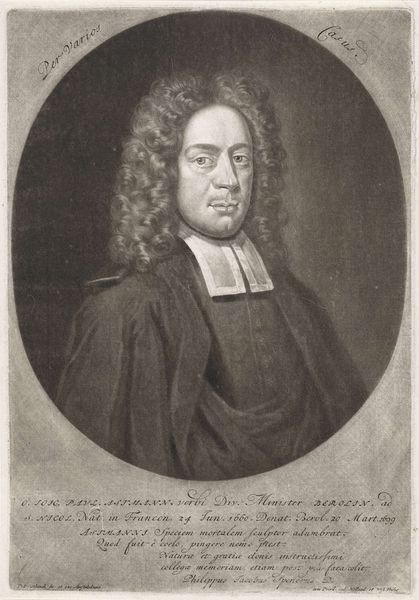
Portret van Jacob van Nuys Klinkenberg c. 1793 - 1817
0:00
0:00
frederikchristiaanbierweiler
Rijksmuseum
Dimensions: height 376 mm, width 274 mm
Copyright: Rijks Museum: Open Domain
Curator: Here we have a print, an engraving dating from circa 1793-1817, titled "Portret van Jacob van Nuys Klinkenberg". It currently resides in the Rijksmuseum. Editor: My first impression is one of contained solemnity. The monochrome palette lends it a sense of historical weight, while the oval frame neatly confines the subject, drawing attention to the face. Curator: Indeed. The sharp lines created through the engraving technique offer us an interesting contrast with the soft curve of the oval, as well as the softer facial features of the man. It almost feels like a study in contrasts. Editor: Absolutely. Klinkenberg's stern expression seems to echo the somber tones employed by Frederik Christiaan Bierweiler. The high, powdered wig speaks of status and adherence to societal norms of the time, while his clerical garb suggests a deeper devotion. Do you notice the subtle highlights around his face and clothing? Curator: Precisely. They help define his presence in the pictorial space. The details in the engraving, particularly in the wig, are remarkable, creating a rich textural surface within the overall monochromatic scheme. But beyond the pure structure of it, it appears like there may be something more that strikes your interest? Editor: It's more about who this person *was* in society and the meaning it carried then. I'm particularly drawn to the open book in the portrait, a potent symbol of knowledge and learning, but perhaps also of a life dedicated to teaching and faith. The darkness looming over his shoulders feels a bit unsettling, though. Does that add an air of mystery for you? Curator: To me it is a demonstration of shadow as depth, but you raise an interesting point. Without clear external referents in the piece itself, your iconographic lens leads us to consider more context in how we perceive the values the sitter symbolizes. Editor: Overall, this artwork captures both the external appearance and the symbolic representation of a learned man from that era. It sparks an appreciation for the sitter as well as the history of the Baroque print movement. Curator: From my viewpoint, I appreciate how the visual structures—the lines, tonal variations, the careful construction of form—come together. It truly enriches one's experience of this artifact.
Comments
No comments
Be the first to comment and join the conversation on the ultimate creative platform.
